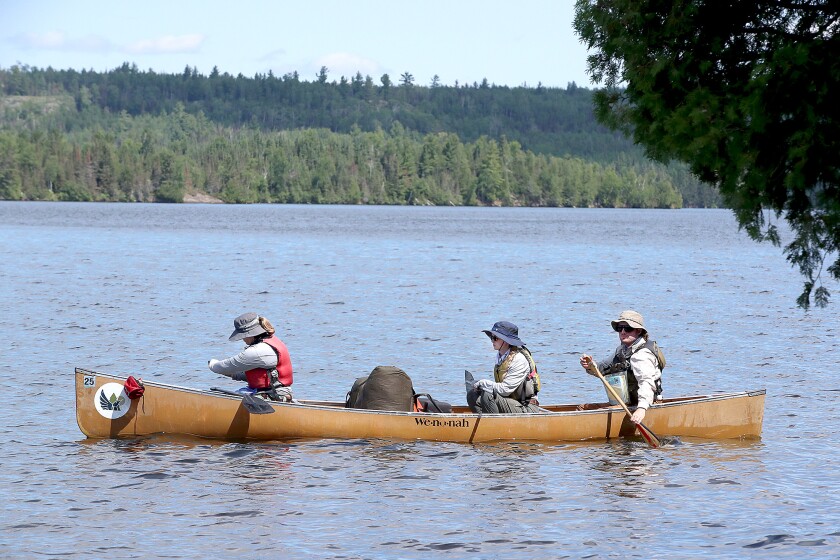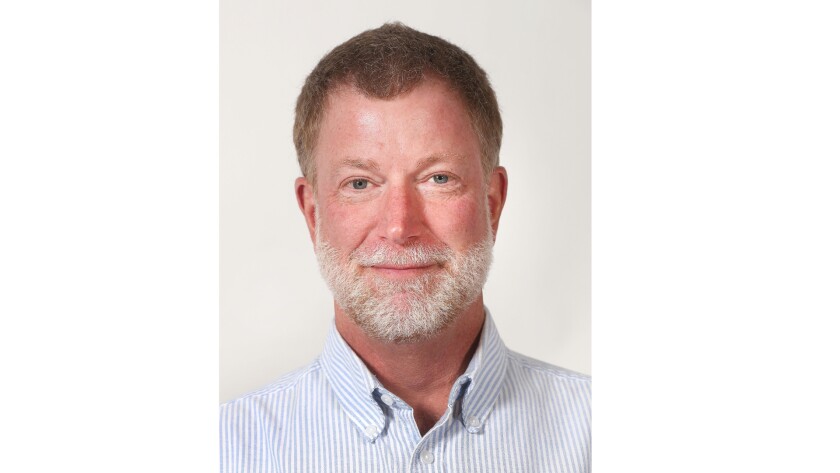ALONG MOOSE LAKE — At the very end of the road, at exactly the point where civilization meets the million-acre Boundary Waters Canoe Area Wilderness, lies a Scout camp brimming with kids heading out into the wild.
They sometimes waver at first, struggling to flip a canoe up onto their shoulders or to steer one in a straight line. But after a week or 10 days of paddling they come back stronger, tougher, leaner and better.
ADVERTISEMENT
This place goes by several names, unofficially — Sommers Canoe Base, the Ely Base, the Canoe Base, Northern Tier or just the Base — but for 100 years now it has always had a single mission: Get kids out in canoes.
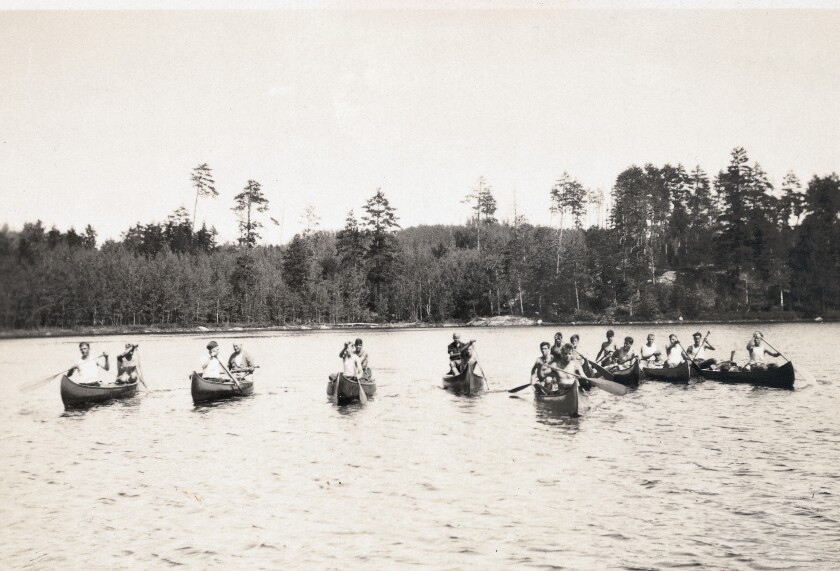
It began in 1923 with trips organized by a guy named Carl Chase from the Iron Range Boy Scout council and was at first called Region 10 Canoe Trails. Flash forward to 2023 and it’s now officially called the Charles L. Sommers Wilderness Canoe Base, part of the Northern Tier High Adventure camp network owned and operated by the national office of the Boy Scouts of America.
It is the oldest high-adventure camp in the U.S. and has been the base camp from which hundreds of thousands of Scouts have trekked into the wild over the decades — some of them canoeing for the first time, most of them venturing away from roads and civilization for the first time.
The numbers are impressive: This summer alone, the camp will send nearly 4,000 kids from across the U.S, into the wilderness, both the BWCAW and Ontario's Quetico Provincial Park that lies just 6 miles up the way.
On any given day this summer, the camp will have more than 400 people out on canoe trips. There are 500 canoes (not all are being used) in what’s believed to be the largest private fleet of canoes anywhere in the world. Racks of life jackets, paddles, cook kits and cookstoves and water bladders and tents and packs, hundreds of packs of various sizes, fill entire buildings. (Ely-based Kondos Outdoors now sews most of the camp’s big canoe packs because they have been able to make them “Scout proof” better than any other company.)
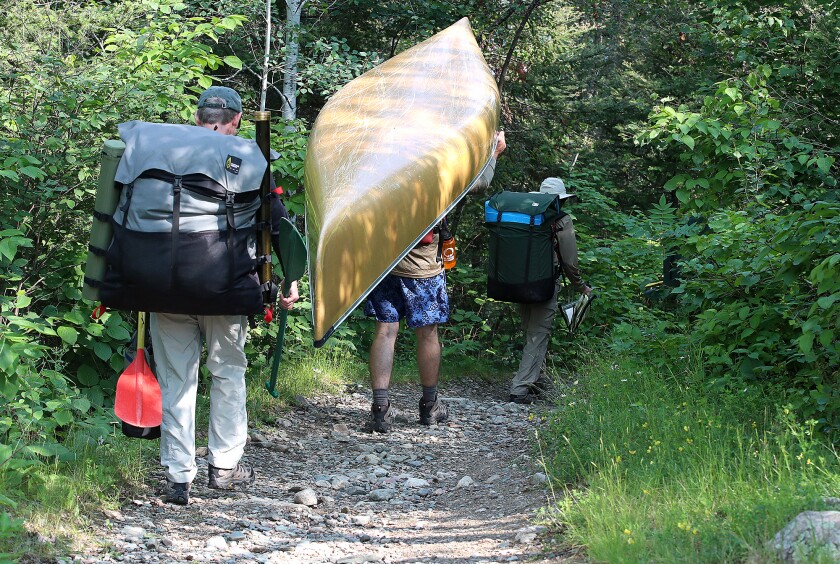
Some 125 staff are needed to keep the camp running: cooks, maintenance, office managers and guides, called interpreters, who accompany each canoe trip.
“We really could use more staff just to give our people a few more breaks during the summer. We were up over 200 before COVID hit and then all the craziness of trying to hire people started,” said Leslie Thibodeaux, general manager of the Northern Tier program.
ADVERTISEMENT
The interpreters must be at least 18 years old and have a zest for adventure. Some are former campers returning to be guides, but many are not.

“We get a lot of college students. A lot of kids taking a gap year off. … We get some wandering souls who aren’t quite sure what they want to do but have the summer available to do this,” Thibodeaux said. “We have a few adult interpreters, too, some teachers who have the summer off. … Some people just have a sense of adventure and find us.”
While they come from various backgrounds, most of the interpreters are outgoing, responsible and capable, able to function independently as well as take responsibility for getting a group into, through and out of the wilderness.
“You really have to be an extrovert to do that job well, to be able to communicate,” said Thibodeaux, a Nebraska native who has been with the Ely camp since 2012.
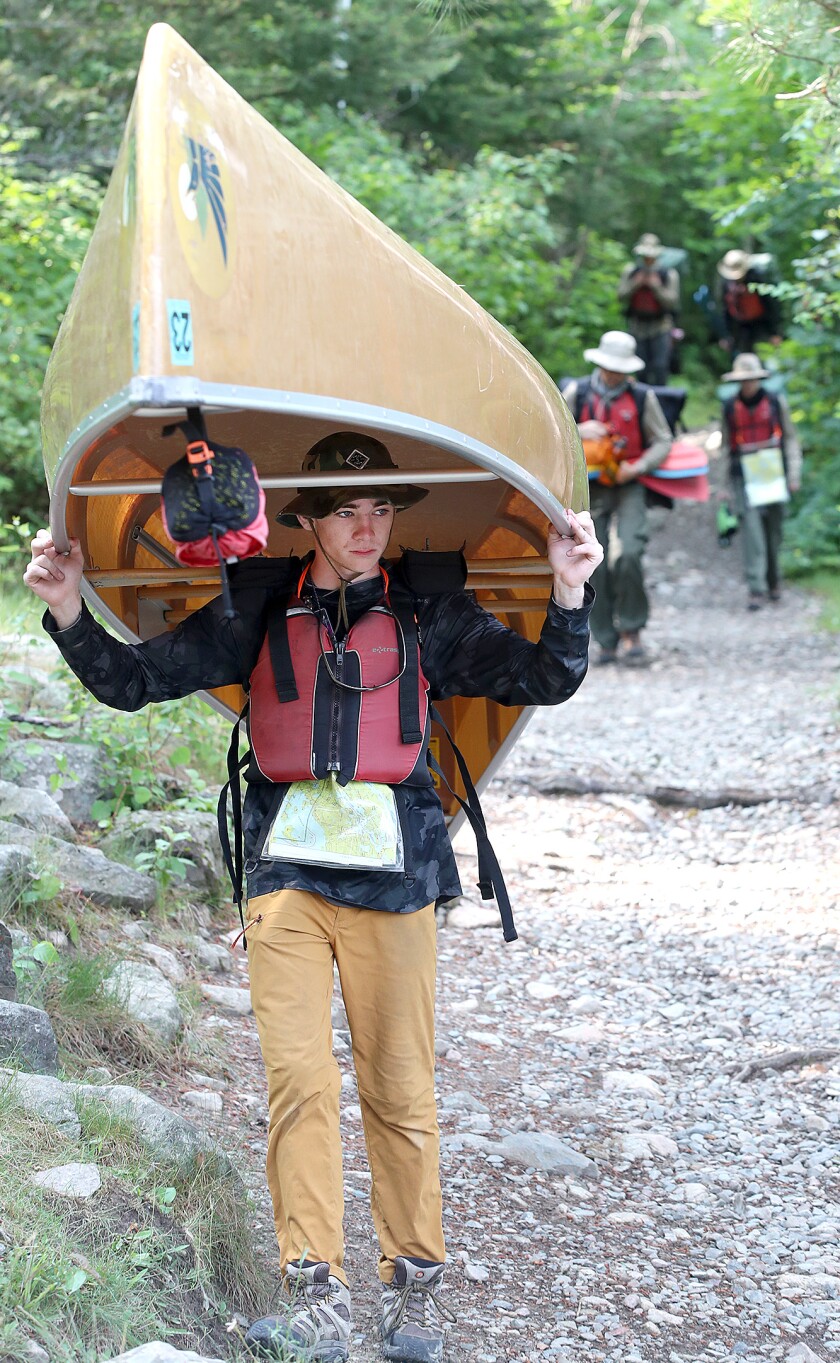
On a breezy July day, interpreter Ryan Harvey was preparing a group of Scouts from Missouri and Kansas for their canoe trip. Harvey came to the camp as a Scout/camper in 2018 and liked it so much he knew he wanted to come back as a staff member.
“I love this country, the lakes, the topography,” said Harvey, 19, who lives near Denver. “It’s so different from what I’m used to. I fell in love with it just driving up here. I love to be on this water.”
This summer has been a bit of a challenge due to a record crop of black flies and mosquitoes, he noted, but head nets and bug spray help. And the energy from a constant stream of excited campers is easy to feed off.
ADVERTISEMENT

Every day, the camp sends out eight to 10 groups of up to nine people, the maximum group size allowed in the BWCAW — usually one staff interpreter, two adults from the Scout troop and six Scouts. (Most of their canoes have a built-in third seat.)
Every day, more groups arrive from across the U.S. Some drive all the way from Maine and Florida and California and Texas, others fly into Minneapolis or Duluth and then rent vans to get to Ely. They spend their first afternoon meeting their interpreter, planning their canoe route and readying their gear. The next morning, they practice some basic moves, like getting a canoe up on their shoulders for a portage, and then head out before noon.

Then each afternoon a tired but happy stream of eight to 10 groups comes back into camp after a week or 10 days in the wild where they fished, swam, learned to set tents, cook outdoors and paddle a canoe straight and true. They spend one last night at camp with a bonfire ceremony and then head home the next morning, just before another surge of eight to 10 groups arrive.
This goes on every day, all summer, a bit like the movie "Groundhog Day."
“We have to remind ourselves that every day is the first day for another bunch of groups and that they need to start from the beginning, just like yesterday’s groups and the day before,” Thibodeaux said.

Each group has a designated leader, one of the youth who eventually becomes the decider of where to travel, where to camp and when to break camp or have a meal. At some point, the interpreter “works himself out of a job,” as the youth leader takes over the group dynamic and decision making and as the campers take up daily chores.
“That’s part of the goal of the program is to build up that leadership skill,” said Blake Ferree, camp director.
ADVERTISEMENT
For its first 20 seasons the camp was mobile, with canoe trips starting from various locations, and then moved to its current location on Moose Lake, about 20 miles northeast of Ely, in 1942. The first camp-owned canoes, made of wood and canvas, were purchased in 1928. In the 1950s, famed Ely canoe builder Joe Seliga began selling wooden canoes to the base and continued as the primary supplier until 1972, when the shift to lighter aluminum canoes was made.

Now, the camp is buying dozens of lightweight Wenonah canoes every year, made from Kevlar and weighing just 45 pounds or so. (They use mostly the 18-foot Champlain model.) The Scouts get a good deal from the Winona, Minnesota, manufacturer in part because its founder, Mike Cichanowski, is a Sommers camp alum from 60 years ago, just before he started making canoes.
Chichanowski, who founded Wenonah Canoes in 1968, was an Eagle Scout, as were his three brothers. He attended the canoe base for his first BWCAW trips in 1964 and 1965.
“I can’t overstate how big an influence going to that camp had on my life,” Chichanowski, 75, told the News Tribune. “I had been canoeing quite a bit down here on the (Mississippi) River. … But those first Boundary Waters experiences, they were just awe inspiring. ... They helped form who I am and what I’ve done, making canoes for more than 50 years. … I still go up there, with my grandchildren now. It’s still a big part of my life.”
In addition to the Sommers base camp near Ely, Northern Tier High Adventure also runs canoe bases near Atikokan, Ontario, and Bissett, Manitoba, all part of the Boy Scouts' national High Adventure program.
The Ely camp was hit hard by the 1999 windstorm that devastated the Boundary Waters region, and by another 2016 storm that killed an adult and a youth camper on a trip in Quetico when a tree fell on them. But perseverance has always been a big Boy Scout trait.

Thibodeaux noted the Northern Tier camps pushed through not just the COVID-19 shutdown but also the 2020 bankruptcy of the Boy Scouts of America and the nearly 18-month border shutdown halting travel between the U.S. and Canada that shuttered both of Northern Tier’s Canadian operations and kept Ely-based campers on the U.S. side of the border.
ADVERTISEMENT
“We’re back to normal, or getting there,” she said. “After 100 years, it’s going to take more than that to stop this place.”
For more information, go to

Who can go to camp?
High school age girls and boys who are part of the Boys Scouts of America program. All campers must be either 13 or have completed eighth grade. They also must pass a swim test before the trip. Most Scouts go as groups from specific troops although some go as individuals and are placed into other groups.
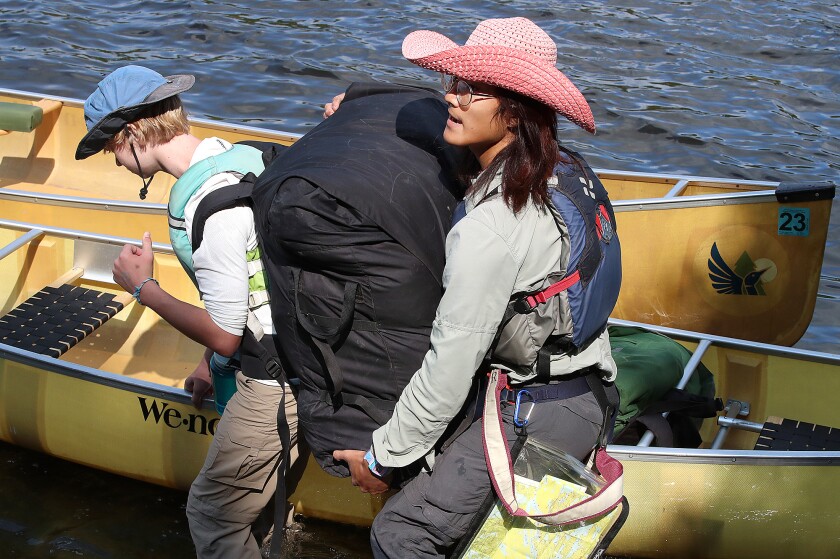
How much does it cost?
Camper fees are based on groups of up to eight people — two adults and six Scouts. If the group is full, the cost this year is about $800 per person for the seven-night trip with six days in the BWCAW or $1,150 per person for the 10-night trip with nine days in the BWCAW.
Okpik winter camping
The Sommers base camp also is home to the Scouts' Okpik winter camping program that offers ski, snowshoe and dogsled excursions into the wilderness near Ely. For more information, go to .
ADVERTISEMENT

National High Adventure Camps
In addition to Northern Tier’s three canoe camps, the Boy Scouts also operate Summit Bechtel Reserve in West Virginia, the Philmont Scout Ranch in New Mexico and Sea Base in the Florida Keys.
Who was Charles Sommers?
Charles L. Sommers, a St. Paul businessman, was an avid camp supporter, canoe trip organizer and participant. He was active in the Boy Scouts and went on to help purchase the current camp location where in 1942, the historic lodge building was erected. It now serves as a meeting hall and interpretive center.

Alumni reunion in August sold out
Hundreds of Sommers camp staff alumni are set to gather for a 100th anniversary celebration Aug. 24 at the camp, but the event is already sold out.

Buy the book
Alumni of the camp may be interested in a new book, “The Far Northland, a Century of High Adventure at Northern Tier,” published by the Charles L. Sommers Alumni Association and written by Dave Kenney, a Minnesota-based professional researcher and author. The book has 112- pages and dozens of historic photos commemorating the camp's first 100 years.
It costs $34.99 and can be ordered at the alumni association's website, . (The URL is named after both a cheer of sorts that campers give and the Hol-Ry cracker, baked by the Zinsmaster bakery in Duluth, that was sturdy enough to stand up to canoe trips and a staple food at the camp for decades.)

